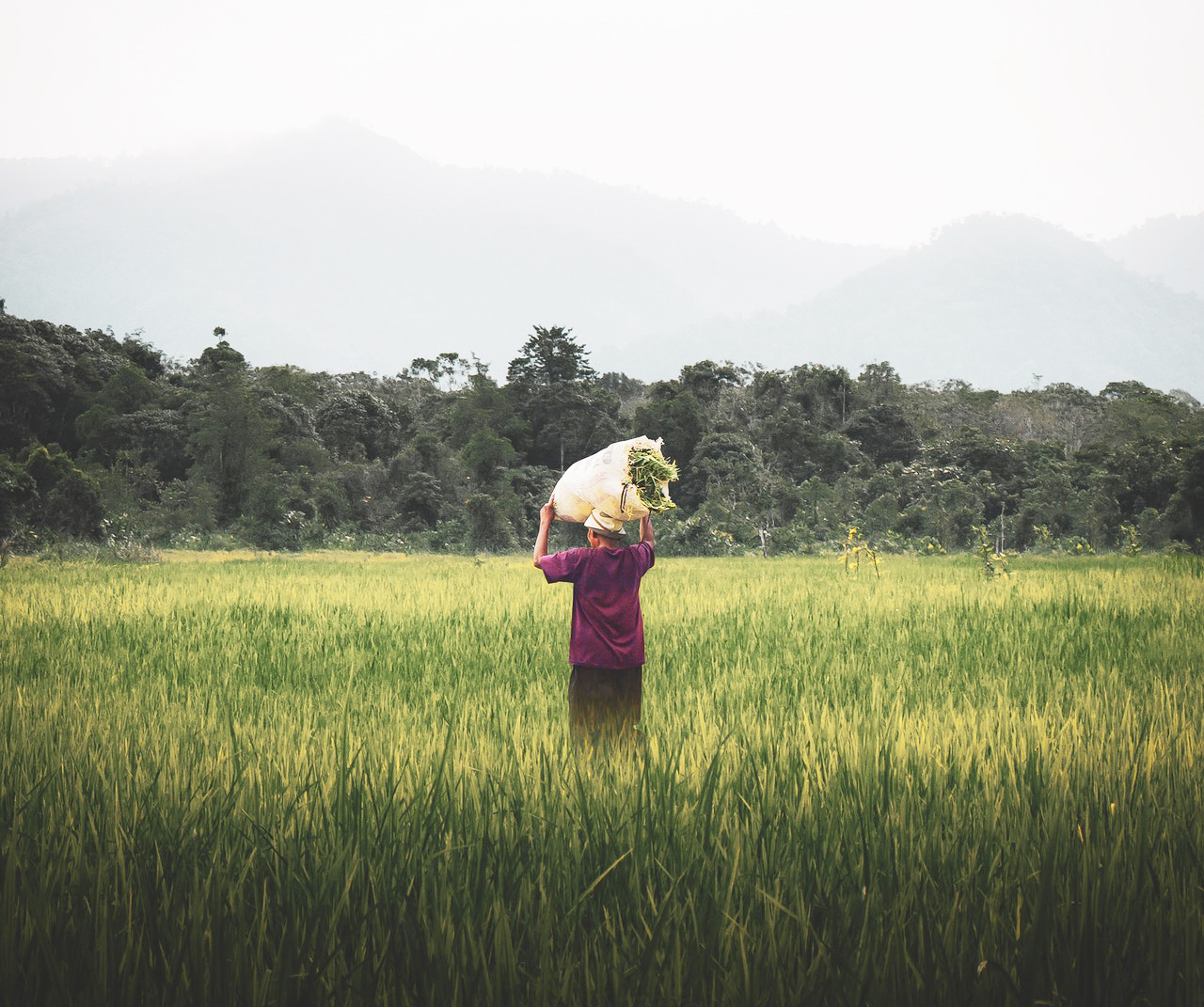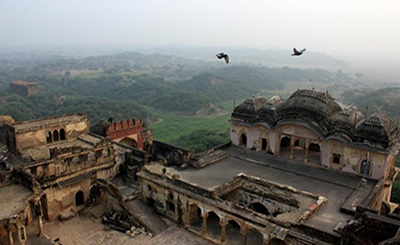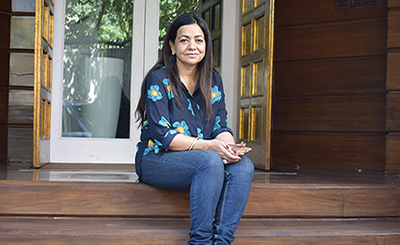
Poet’s Note: These five poems delineate, and subsequently seek to deglorify, the truncated domains and identities (rural, Hindu) women inhabit throughout their lifetimes. They remain replete with terms and idioms endemic to India, from where I write.
shaaluk-gatherer
in water, she can dream.
so she lines the lilies with
parchment palms, and
wants to be breeze someday
when she plucks the stalks in
tender regret, fish-flecks
swirling in red and blue
witness a sigh
nutmeg feet mired in mud,
hers too, is the sigh of a shaaluk —
she knows her time in water is up.
shaaluk: the Bangla word for pink or red water lilies (Nymphaea rubra) in India.
henna-drawing
women in sky blue, parrot green shalwars
stifle their laughter, chalk out
henna-roses on her palm
they painted the same labyrinths
on her mother once, and her
grandmother…
a bundle in yellow, the dulhan, too
cannot find her way through
barbed brown mazes
so she prepares to get lost.
henna: A dye prepared from the plant Lawsonia inermis, also known as the henna tree. Henna can also refer to the temporary body art resulting from the staining of the skin from the dyes; shalwar kameez is a traditional combination dress worn by women, and in some regions by men, in South Asia, and Central Asia. Shalwars are trousers which are atypically wide at the waist but narrow to a cuffed bottom. [Source: Wikipedia]; dulhan: The Hindi word for bride
lorii
she finds herself in mustard oil under the Sun.
… in suppleness of baby feet,
milky scents of downy heads …
they all are her tenderness.
in afternoons, she dusts off baby power
from shoulders, sings —
after children drift to sleep, she
still keeps singing
this time for herself —
a secret ditty, a mutiny.
lorii: The Hindi word for lullaby.
milk and sesame
she has been marked pink, yellow, crimson, blue
now is the age of milk and sesame, they say.
her hair is pruned like rabid sheep-fleece
till her head swells in a flaky full-moon
she tries to grieve in earnest
turns in her mouth her marriage pledge -
‘That heart of thine shall be mine,
And this heart of mine shall be thine.’*
her litany of love is two bodies
bound on a stiff charpoy** —
neither of which she knew
neither of which she loved
so she marks one with sandalwood,
and wraps both of them in white
she would not speak anymore, she decides.
* Max Muller's translation of the Hindu marriage pledge,
‘यदेतद्धृदयं तव तदस्तु हृदयं मम । यदिदं हृदयं मम तदस्तु हृदयं तव ॥’ [Source: Chandogya Brahmana]
** From Hindi-Urdu चारपाई (chārpāī). A traditional bedstead in India, consisting of a wooden frame bordering a set of
knotted ropes. [Source: Wiktionary]
antyeshti
what remained of her was a travesty.
beyond mud, henna, lullaby —
a bleached widow with whiffs of
ash, blank elaichi beads
they lather the lump with
shlokas and jasmine, honey and yoghurt
carry it with the glimmer of relief
butchers bear when unruly lambs
come out split with good meat
the corpse spits and sings in fire
she longs to hold a shaaluk flower.
antyeṣhṭi (अन्त्येष्टि) is a composite Sanskrit word of antya and iṣṭi, which respectively mean "last" and "sacrifice". Together, the word means the "last sacrifice". [Source: Wikipedia]
elaichi: From Hindi इलायची (ilāycī). Cardamom [Source: Wiktionary]
shlokas: From Sanskrit श्लोक (śloka). A distich of Sanskrit
verse. [Source: Wiktionary]
The note on poetics and the poems are part of our Poetry Special Issue (January 2022), curated by Shireen Quadri. © The Punch Magazine. No part of this essay or the poems exclusively featured here should be reproduced anywhere without the prior permission of The Punch Magazine.
More from The Byword
Comments
*Comments will be moderated











